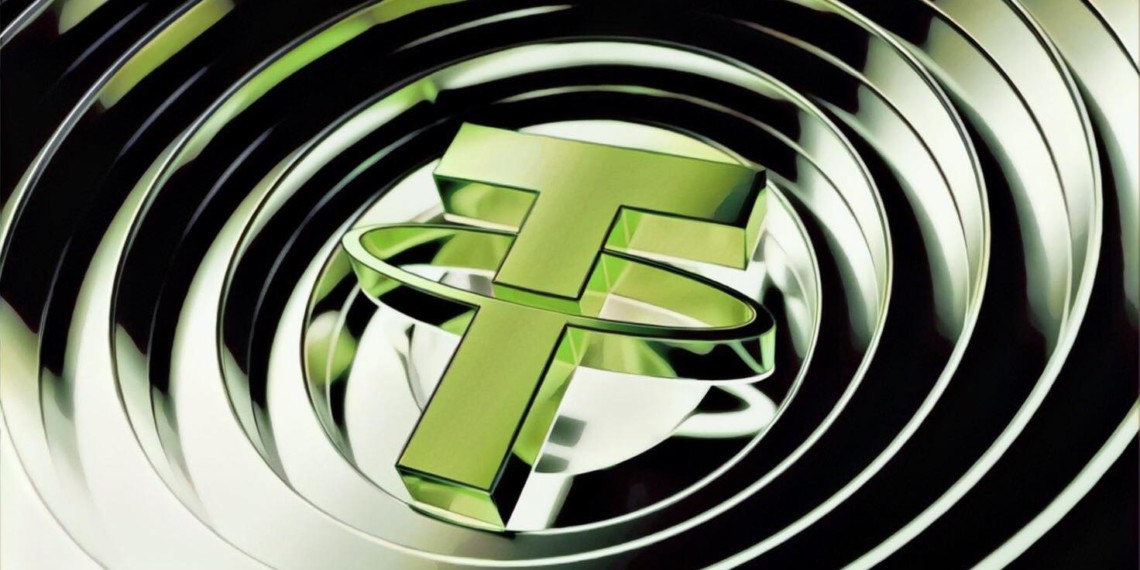
Tether (USDT) is the most traded digital currency in the crypto market, boasting numbers that are nearly double that of even Bitcoin (BTC). Thanks to its stable value that remains pegged to the US Dollar on a 1:1 ratio, Tether and other stable assets like USDC and BUSD fulfill a fundamental role in the market.
Initially launched on Ethereum as an alternative to transferring between crypto and fiat currencies, USDT quickly adopted Bitcoin’s OMNI protocol and was later made available on other chains, including Tron, Solana, Algorand and others. While USDT remains the most dominant stablecoin, maintaining over 65% market share, its original Ethereum network is no longer responsible for the majority of USDT transactions. Given 2021s explosion of DeFi projects and NFTs - mostly built on the Ethereum network, ETHs transaction fees have soared, making it much more expensive to transfer simple USDT from A to B.
USDT TRC-20 overtakes USDT ERC-20
According to the Coinmetrics chart, as of April 30th the volume of USDT tokens flowing through the Tron blockchain ($26 billion), has exceeded that of their ERC-20 counterparts registered at just under $25 billion. Many Tron supporters have dubbed this as “the flippening,” which is originally a term that is used to describe a hypothetical event where Ethereum overtakes Bitcoin in market cap.
Data suggest that Ethereum’s exorbitant transaction costs fueled the exodus of crypto users from the network. On the day of the flippening, which was April 16, the average gas cost on the ETH blockchain was $24 jumping to $30 just four days later.
Tron appears to be a popular alternative thanks to its low transaction fees, which allows individuals to send and receive payments with negligible costs. Some of you may recall that Tron in fact even incentivized users to move their USDT to the TRX-20 format with a massive $20 million rewards program in 2019.
TRC-20 USDT Thrives On Exchange On/Off-Ramps and P2P Transactions
Note that Binance, OKEx, and Huobi hold most of Tron’s Tether, which implies that users on crypto exchange platforms prefer settling trades in USDT. Moreover, USDT also finds enormous adoption in remittances, payments, and the DeFi space since its affordability allows frictionless movement of value across the crypto ecosystem.
By charging only a few cents per transaction, Tron-powered USDT payments have quickly become one of the cheapest ways to move funds across the globe, especially when pitted against Bitcoin, Ethereum, and legacy financial processes like credit cards and wire transfers.
Justin Sun, Tron’s founder, expects Tether to continue making headlines as more people and institutions embrace decentralized networks and their products. Additionally, Sun anticipates that Tron overtaking Ethereum in this aspect moves the protocol closer to being the preferred “settlement layer.”
BTC Developer: Ethereum’s Pitfalls Have Allowed Tron to Overtake It
The flippening comes almost a year and a half after the prediction of Bitcoin developer Udi Wertheimer. In November 2019, the developer tweeted that Tron is on track to “flippen Ethereum” in a “year or so.”
At the time, the BTC developer hinged his projections on Ethereum’s shortcomings such as inflexibility, inefficiency, slow transaction speeds, and lack of business skills.
Away from the two competing platforms, Tether’s overall market capitalization is on the rise. Currently, there are more than $50 billion USDTs in circulation. Tether’s CTO, Paolo Ardoino, observed that USDT’s success provides a “blueprint” for the future of banking systems and central bank digital currencies (CBDC).
Ethereum’s Fighting Chance
Despite the flippening, Tether seeks to encourage USDT usage on Ethereum by tapping into a layer two scaling platform known as Hermez Network, which employs zero-knowledge rollups (ZK-Rollups) that facilitate off-chain transaction processing and recording validity reports on the network.
This would allow Ethereum to scale by consolidating hundreds of transactions as one, minimizing costs and using less storage. Hermez Network’s estimated speed is 2,000 TPS, which is about 100x faster than layer one. Moreover, the current fees on the main chain can be reduced by a factor of 10, which leaves the average gas cost around $1.
According to Ardoino, a layer two scaling option is necessary since the Ethereum blockchain will continue getting congested before the full arrival of Ethereum 2.0, which is quite unlikely to be fully functional for a few years.
But for now, Tron is doing well in supporting the current needs of the space, allowing DeFi, CeFi, and other forms of crypto transactions to proliferate. The only current setback is that it doesn’t enjoy the same level of support as Ethereum.
CYBAVO Vault Supports TRC-20 Tokens
CYBAVO Vault is part of the CYBAVO Suite of private key management solutions and fully supportsTRC-20 or Tron-based USDT. CYBAVO provides a suite of solutions that include: CYBAVO Vault, a multi-coin, multi-user vault solution featuring granular policy controls, threshold transaction signing and multi-party computation (MPC), CYBAVO Tx Manager, which delivers mass deposit address generation, low-cost transaction fees, integrated AML transaction monitoring and a unique fake deposit detection/protection mechanism, and the CYBAVO Wallet SDK, allowing development of custom whitelabelled wallet apps, or integration within existing apps.
CYBAVO’s customers include cryptocurrency exchanges, custodians, fund managers, Blockchain developers and payment gateways around the world.
If you have a need to securely transfer or support TRC-20 USDT, reach out to us at cybavo.com